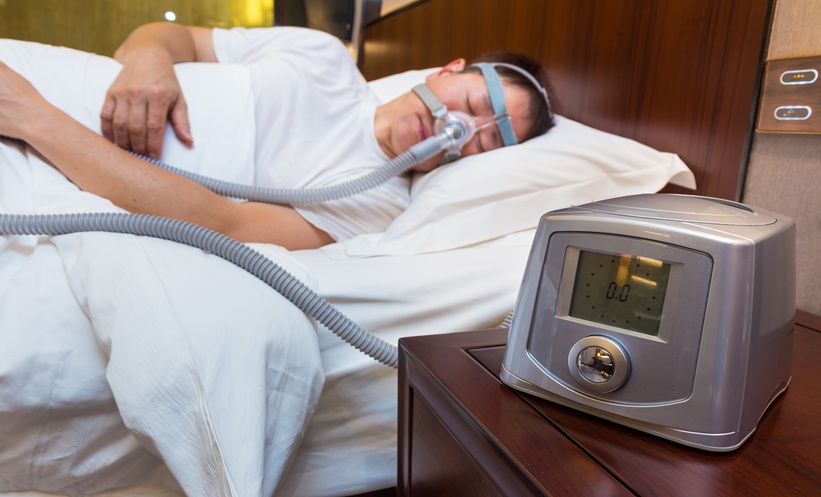Author: Natasha Meunier-McVey, EMJ
Citation: Respir AMJ. 2023;1[1]:20-22. DOI/10.33590/respiramj/10300085. https://doi.org/10.33590/respiramj/10300085.
![]()
AN ENGAGING session on the newly revised American Thoracic Society (ATS) Clinical Practice Guidelines: Clinical Practice on The Cutting Edge focused on key updates to the idiopathic pulmonary fibrosis (IPF) guidelines. The session was a workshop report defining pulmonary rehabilitation, and a technical statement on the measurement of lung volumes. Presented at the Annual ATS International Conference on May 22, 2023, the session, chaired by Mark L. Metersky, Professor of Medicine and Associate Chief of Service, Department of Medicine, UConn Health, Farmington, Connecticut, USA, delved into how evidence is used to inform diagnostic and treatment recommendations.
IDIOPATHIC PULMONARY FIBROSIS AND PROGRESSIVE PULMONARY FIBROSIS IN ADULTS: A GUIDELINE UPDATE
Ganesh Raghu, Division of Pulmonary, Critical Care and Sleep Medicine, University of Washington, Seattle, USA, led the highlights session of the guideline update on IPF and progressive pulmonary fibrosis (PPF) in adults from the ATS, European Respiratory Society (ERS), Japanese Respiratory Society (JRS), and Asociación Latinoamericana del Tórax (ALAT). A patient advocacy group was also involved in this update, led by esteemed professors who helped shape a rigorous methodology to ensure optimal standards of recommendation. Raghu explained how this update was beyond the scope of revised guidelines, as it took new insights into consideration following the publication of a pre-clinical milestone paper from the INBUILD Trial Investigators in October 2019, which highlighted the potential of nintedanib in progressive fibrosing interstitial lung diseases.
The primary focus of the update concerned the 2018 guidelines surrounding transbronchial lung biopsies and transbronchial cryobiopsies for patients with newly detected interstitial lung disease (ILD) of unknown cause. The panel had made no recommendations for these histopathological diagnostic procedures in the previous update due to a lack of evidence. Raghu explained that these procedures were now deemed acceptable for this patient population in the new guidelines, when the procedure is completed by a pathologist with experience in carrying out and interpreting histopathological results. Raghu reiterated that this may not be appropriate for all patients and must be considered in each case. The guidelines made no recommendation for or against genomic classifiers as an alternative diagnostic test due to insufficient evidence and a lack of accessibility.
Raghu highlighted considerations surrounding the terminology of PPF, and whether it should be termed progressive fibrosing interstitial lung disease. It was concluded that, due to the nature of the disease going beyond the scope of ILD, PPF is a more accurate term to reflect the progressive nature of the disease. To now be classed as PPF, a patient must meet the criteria of having unexplained respiratory symptoms that are confirmed through radiological or physiological evidence within the year. The committee also found a change in the forced vital capacity to be preferable for the classification of PPF, as this forecasted poor outcomes, as well as considering the absolute change in diffusing capacity for carbon monoxide (DLCO). The absolute rather than relative change in DLCO was voted for, as it is a consistent and strong predictor of mortality; however, Raghu emphasized that it is essential to consider other factors that may contribute to a declining DLCO. The committee also decided that the timeline element of PPF monitoring will be removed from the updated guidelines and be left to the discretion of the physician.
Raghu shared the updated guidelines for the treatment of asymptomatic gastroesophageal reflux disease in patients with IPF. The committee’s suggestion was against treating patients with antacid therapies for the purpose of reducing gastroesophageal reflux disease symptoms, as the evidence was low-quality and further essential research must be carried out before recommendations can be made. Raghu also highlighted that physicians should not refer patients for anti-reflux surgery for the purpose of improving respiratory outcomes, a factor that has never been considered in the context of clinical practice guidelines.
PULMONARY REHABILITATION
Anne E. Holland, Professor of Physiotherapy and Head of Respiratory Research, Monash University, Melbourne, Australia, took to the stage to discuss the new guidelines in approaching pulmonary rehabilitation. With there previously only being a clinical statement to pulmonary rehabilitation, this is the first set of guidelines published for this strategy that is under-utilized and under-resourced.
Holland explained that at least 5% of patients with chronic obstructive pulmonary disease (COPD) would benefit from pulmonary rehabilitation; however, several barriers exist, including geographic disparities in the availability of programs and a lack of knowledge in referrals. They went on to address the improvements in the available evidence concerning the strategy, and the fact that the need to optimize practice and policy has become evident. The guidelines were developed according to the ATS methods, and involved a multi-disciplinary panel of healthcare professionals who are involved in referral to and delivery of rehabilitation, as well as a patient advocate.
Holland began by addressing whether patients with COPD should undertake pulmonary rehabilitation. From 82 randomized controlled trials of over 4,600 participants and a predicted clinical outcome of exercise capacity, researchers found an improvement of 44 m walking distance due to pulmonary rehabilitation. This result exceeded the minimal importance difference, so the researchers considered it clinically relevant. The panel strongly recommended participation in pulmonary rehabilitation based on the evidence available, which was deemed of moderate quality, and placed high value on improvements in exercise capacity, dyspnea, and health-related quality of life.
The third pathway focused on recommendations for pulmonary rehabilitation in adults with ILD. With similar results, Holland explained that the recommendation was for pulmonary rehabilitation for patients within this demographic. Using the same approach, the committee made a conditional recommendation for adults with hypertension to undertake pulmonary rehabilitation; however, the effect was not as large, and the costs noted were potentially higher. Holland noted that there was some evidence of a risk of bias in some of the trials, and some significant adverse effects were noted in uncontrolled data.
Looking at newer models of care, Holland shared results from the focus of incentivized pulmonary rehabilitation versus telerehabilitation in adults with chronic respiratory disease. There were no clinically or statistically significant differences noted between the two, but program completion was higher in telerehabilitation, reflecting the positives of ease of access. The recommendation for adults with stable chronic respiratory disease is to offer the choice of incentivized rehabilitation or telerehabilitation, which is a strong recommendation based on moderate quality evidence. The final recommendation concerned adults with chronic respiratory disease who are on pulmonary rehabilitation maintenance programs, which is defined as a supervised exercise program following chronic rehabilitation completion. The committee found that maintenance was favored over no maintenance; however, this was not a statistically significant finding and hospitalization rates, dyspnea, and quality of life measures were not affected. A conditional recommendation was advised for adults with COPD based on high quality evidence, suggesting either supervised maintenance and rehabilitation or usual care following the initial program.
Holland concluded the session, noting that the panel also made key recommendations surrounding research needs in pulmonary rehabilitation to improve the uptake of these programs. They also highlighted the lack of data for producing models suitable for low-and-middle income countries, which must be adapted to optimize the role of pulmonary rehabilitation in these patient populations.
Holland concluded the session, noting that the panel also made key recommendations surrounding research needs in pulmonary rehabilitation to improve the uptake of these programs. They also highlighted the lack of data for producing models suitable for low-and-middle income countries, which must be adapted to optimize the role of pulmonary rehabilitation in these patient populations.
CONCLUSION
Key updates to the guidelines on IPF and PPF in adults, and the new guidelines on pulmonary rehabilitation, will help to optimize decision-making for physicians and healthcare professionals, contributing to improved patient care. As mentioned, the importance of ongoing research to continually improve recommendations will undoubtedly contribute to better clinical outcomes and future treatment strategies.







